Youth Care Treatment Center and school has helped teens with suicidal ideation all over the United States for 30 years. Our unique approach is based off of solid morals and beliefs to help adolescents be successful in turning their lives around.
Understanding Suicidal Ideation
Learn about suicidal ideation
Suicidal ideation refers to thoughts about ending one’s own life. The intensity of such thoughts may vary from brief considerations to detailed plans. Sadly, numerous children and adolescents grapple with suicidal ideation, and it is viewed as one of the most dangerous symptoms connected to childhood anxiety and depression. Since many children and adolescents act out verbally here and there and make dramatic comments surrounding death, many look at statements such as these as being an attempt for a young individual to obtain attention. However, this disregard can be devastating, because even if a child or adolescent is only thinking of committing suicide, the line between those thoughts and the behaviors that come with them are slim.
Thankfully, there are treatment options available that can help combat these pervasive suicidal thoughts so that children and adolescents can live a healthy and happy life.
Statistics
Suicidal ideation statistics
It is almost impossible to determine the definitive prevalence of the number of children and adolescents who struggle with suicidal ideation because they often do not voice their thoughts. However, since suicidal ideation can often lead to attempts at suicide and completed suicides, researchers have put together statistics surrounding suicidal behaviors.
The U.S. Centers for Disease Control and Prevention (CDC) have proven that suicide is the fourth leading cause of death among children between ages 10 and 14 and the third leading cause of death in adolescents between 15 and 24 years of age. Within the United States, experts estimate that one suicide attempt occurs about every 38 seconds.
Causes and Risk Factors
Causes and risk factors for suicidal ideation
Mental Health experts believe that a mixture of genetic, physical, and environmental factors all play a part in the development of suicidal ideation. Consider the following:
Genetic: Suicidal ideation is often symptomatic of the presence of a mental health condition, and mental health conditions are known to have strong genetic ties. Depression, for instance, is one mental health condition where suicidal ideation is especially prominent, and research has shown that over 50% of children who have biological parents who battle with depression will have similar symptoms prior to reaching age 20.
Physical: The presence of one’s suicidal preoccupations has been noted as being linked to chemical imbalances within an individual’s brain, specifically with decreased levels of serotonin. When a child or adolescent goes through this chemical imbalance, his or her likelihood of developing a preoccupation with suicide increases tremendously.
Environmental: Living within unhealthy environments can cause children and adolescents to develop unhealthy mental, emotional, and behavioral responses. Those children who are raised in environments where they are abused, neglected, or demeaned are more likely to battle with hindered emotional responses, possibly leading to seriously low feelings of self-worth. This type of diminished self-esteem can lead to the development of suicidal ideation.
Risk Factors:
- Suffering from severe anxiety or severe depression
- Suffering from severe medical concerns
- Family history of depression, anxiety, or other mental illness
- Knowing someone who has died by suicide
- Being exposed to violence
- Low self-esteem
- Suffering from physical, sexual, and/or emotional abuse or neglect
- Losing a family member or loved one
Signs and Symptoms
Signs and symptoms of suicidal ideation
Signs and symptoms that one might display if one is struggling with suicidal ideation will vary based on the child or adolescent’s age, how long the child or adolescent has been consumed with these thoughts, and the type of support he or she has. The child or adolescent’s temperament can also play a role in the symptoms that will be displayed.
Behavioral symptoms:
- Isolating oneself from family and friends
- Increased participation in risky activities
- Participating in self-harming behaviors
- Talking and/or writing about death
- Using phrases indicative of hopelessness, such as “it’s not worth it anymore”
- No longer participating in activities once enjoyed
Physical symptoms:
- Insomnia or hypersomnia
- Weight gain or weight loss
- Noticeable changes in one’s physical appearance (e.g. no longer caring how one looks, not bathing as frequently, etc.)
- Chronic panic attacks
Cognitive symptoms:
- Difficulty concentrating
- Impaired short-term memory
- Preoccupation with death
Psychosocial symptoms:
- Overwhelming feelings of hopelessness
- No longer interested in things one used to have great interest in
- All-consuming feelings of worthlessness
- Feeling as though there is no purpose in existing and that there is no hope for the future
- Severe anxiety
Effects
Effects of suicidal ideation
When suicidal ideation is a constant, the chances that he or she will attempt to follow through with those thoughts becomes more likely. Therefore, children and adolescents who might attempt to end their lives might do so in different ways, however a number of negative effects can develop, including:
- Coma
- Irreversible cognitive impairment
- Permanent scarring
- Paralysis
- Failure of a specific organ
- Total organ failure
- Excessive blood loss
- Anemia
- Brain damage
- Death
Co-Occurring Disorders
Suicidal ideation and co-occurring disorders
Unfortunately, the presence of suicidal ideation can be a symptom of many other mental health conditions. When children and adolescents struggle with ongoing thoughts of suicide, it is likely that they are battling with a mental health condition. Some of the different disorders that suicidal ideation is symptomatic of can include:
- Schizophrenia
- Specific phobia
- Depressive disorders
- Bipolar disorder
- Attention-deficit/hyperactivity disorder
- Panic disorder
- Obsessive-compulsive disorder
- Generalized anxiety disorder
- Social anxiety disorder
- Substance use disorders









